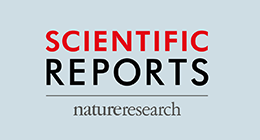data.xls (46 kB)
Data describing eye characteristics of children with unilateral hyperopic amblyopia and healthy controls
dataset
posted on 2019-08-23, 16:26 authored by Jiwon Baek, Anna Lee, Miyoung Chu, Nam Yeo KangThe dataset consists of one .xls file, Table "data.xls". The table provides information about 32 children (64 eyes) with unilateral hyperopic amblyopia and 19 healthy children (controls, 38 eyes), aged 3-16. The table consists of 16 columns and 16 different parameters. The parameters are:
-Sex: 0, 1 and 2 (incomplete field)
-Age: Ages of healthy children (controls) and children with unilateral hyperopic amblyopia.
-Group (0normal/1hyper/2myop/3fellow eye):
0: normal;control eye in a healthy child
1: hyper; amblyopic eye in a child with unilateral hyperopic amblyopia.
2: myop: myopic eye
3: fellow eye; fellow eye in child whose one eye is affected by unilateral hyperopic amblyopia.
-od0/os1/ou2: 0: od: Latin word oculus dexter, for the right eye.
1: os: Latin word oculus sinister, for the left eye.
2: ou: Latin word oculi uterque, for both eyes.
-LogMAR VA: Logarithm of the minimal angle of resolution, as a measure of best-corrected visual acuity.
-LogMAR: Logarithm of the minimal angle of resolution, as a measure of visual acuity.
-sph amblyop: Spherical anisometropia in the eye of a child with unilateral anisometropic hyperopic amblyopia, or in the control eye of a healthy child. Anisometropia is one of the main causes of amblyopia. Anisometropia is measured in diopters, a unit of refractive power which is equal to the reciprocal of the focal lens measured in meters.
-cyl amblyop: Cylindrical anisometropia in the eye of a child with unilateral anisometropic hyperopic amblyopia, or in the control eye of a healthy child, measured in diopters.
-AXL 1226: Eye's axial length, measured in millimeters (mm).
-MeanCT: Mean of two measurements of nasal parafoveal choroidal thickness of the amblyopic, fellow or healthy eye, measured in micrometers (µm), using spectral domain optical coherence tomography.
-MeanCT2: Mean of two measurements of subfoveal choroidal thickness, measured in micrometers (µm), using spectral
domain optical coherence tomography .
-MeanCT3: Mean of two measurements of temporal parafoveal choroidal thickness, measured in micrometers (µm), using spectral domain optical coherence tomography.
-MeanCVI: Mean of two measurements of choroidal vascularity index, measured as the ratio of choroidal luminal area to total choroidal area.
- diffCT1: Difference between the two measurements of nasal parafoveal choroidal thickness, measured in µm.
-diffCT2: Difference between the two measurements of subfoveal choroidal thickness, measured in µm.
-diffCT3: Difference between the two measurements of temporal parafoveal choroidal thickness, measured in µm.
-diffCVI: Difference between the two measurements of choroidal vascularity index (CVI).
Amblyopia, also known as lazy eye, is a visual development disorder characterized by subnormal visual acuity (VA) and
contrast sensitivity in one or both eyes.
This observational case control study was carried out to compare choroidal vascularity (CV) and choroidal thickness (CT) in amblyopic eyes, fellow eyes and control (healthy) eyes in children with unilateral hyperopic amblyopia. A total of 32 children with unilateral anisometropic
hyperopic amblyopia and 19 healthy children (controls) participated in the study. Subfoveal choroidal thickness (CT) and CV were measured using spectral
domain optical coherence tomography.
Comprehensive ocular examinations, including best-corrected visual acuity (BCVA)
testing, fundus examination with slit-lamp biomicroscopy, cycloplegic refraction via
auto-refractometry, spectral-domain OCT (SD-OCT) imaging with an EDI protocol, and axial length (AL) were assessed for all patients. Snellen visual acuity was
converted to logarithm of the minimal angle of resolution (logMAR) for statistical
analysis.
Two independent graders (M.Y.C. and A.L.) performed CT and CV measurements of
the choroid and average measurements of the two observers were used for analysis.


